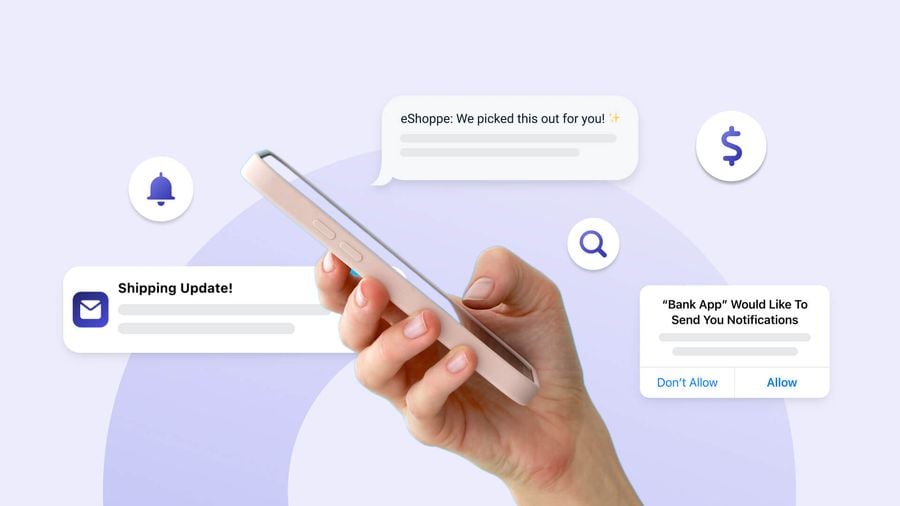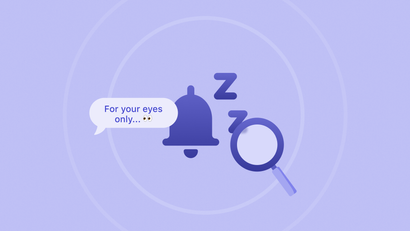It’s not uncommon for mobile apps to measure success based on strictly dollars and cents. It goes without saying that a healthy bottom line is a requirement for a “winning” business, however the truest marker of a sustainable business is not how your users spend their money — it’s how they spend their time.
Every time someone interacts with your mobile app, they are giving you invaluable data to help uncover both pain points and success markers. By tracking user behavior, also known as a user behavior analysis, you can use these insights to effectively diagnose your app with a far more accurate perspective than any earnings report ever could.
App Behavior Analysis: What Should You be Tracking?
Unfortunately, tracking user app behavior isn’t as easy as measuring engagement rates and calling it a day (although engagement will be a key success metric.) Behavior tracking must include everything from short-term retention rates to studying navigation patterns to comprehensive crash reports.
Let’s look at the highest-impact user behavior metrics you should be tracking with your app behavior analysis.
Engagement Tracking
- Retention rate — Measure the percentage of users who continue to use your app over a specific period
- Click-Through Rates (CTR) — Track the percentage of users who click on links or buttons within messages
- Conversion Rates — Measure the number of users who complete desired actions after engaging with a message
Your mobile messaging campaigns are the primary way you communicate with your user base and the clearest way to measure whether or not your communication is resonating. While conversion rate tracking is generally offered as a feature accompanying most mobile analytics tools, CTR can be a bit trickier to track.
Typically click-through rates get less and less accurate over time due to “phantom subscribers,” or devices that are no longer being used but also never unsubscribed. This is often the case for users who deleted your app from their phone but who still may be showing up as a subscriber.
Using a mobile messaging analytics tool like OneSginal, you get access to features like Confirmed Delivery which helps you see data that much more authentically represents the health of your messaging pipeline. Confirmed Deliveries helps track your CTR much more accurately by only taking into account devices that actually received a notification. Having a more precise measurement of your CTR allows you to identify high-click elements within your app, optimize in-app ad placement, and discover where users are disengaging.
Learn more about understanding Confirmed Delivery and how it gives you a better view of your messaging success.
User Interaction Tracking
- Feature Usage — Monitor which features users engage with the most
- Session Length, Frequency, and Abandonment — Track how often users log in and how long they stay
- Navigation Patterns — Understand how users interact, on-screen with your app
In your preferred app analytics tool, you’ll want to implement event tracking for each significant interaction with each of your app’s key features. Use unique event names to distinguish between different actions related to each feature. By defining event parameters to capture additional details, such as the specific feature variant or user attributes, you can identify which features are popular, and understand how users engage with them.
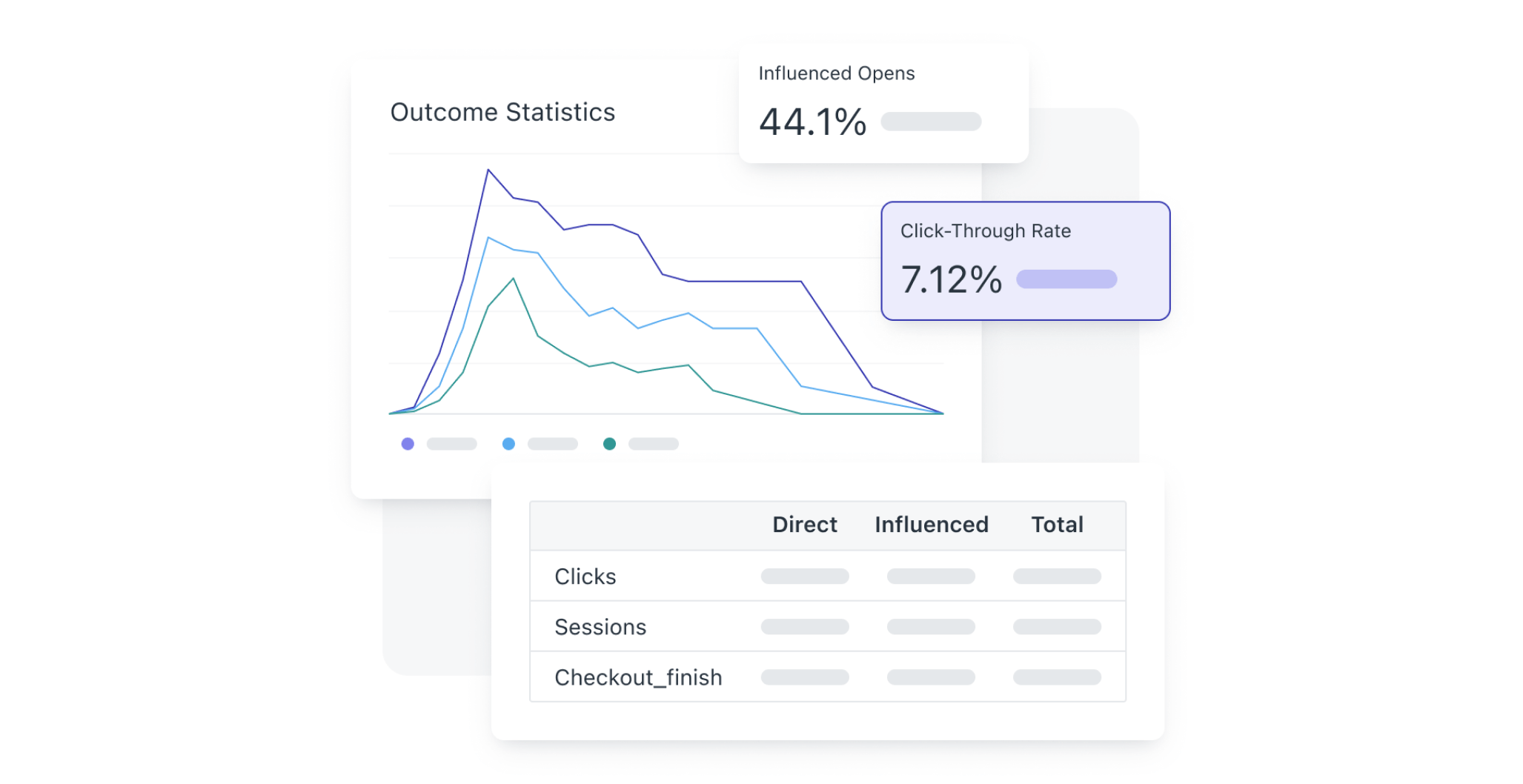
Many analytics tools will allow you to use the session start and end timestamps to calculate the duration of each user session, allowing you to monitor average session lengths to better understand user engagement and define a session timeout threshold based on your app's characteristics.
For measuring specific navigation patterns within your app, a mobile heat mapping tool can be extremely useful to capture gestures like swipes and taps to visualize exactly where users are interacting with your app most.
App Performance and Technical Metrics
- App Load Time — Measure how long it takes for your app to load
- Crash Reports — Monitor instances of app crashes and errors
- Device and OS Versions — Understand the devices and operating systems your users employ
Integrate a performance monitoring SDK to help access your app load time data and adapt load times to user expectations. You can also leverage the built-in tools provided by mobile operating systems for profiling app performance, like Android Profiler and iOS’s Xcode Instruments. Identifying and optimizing slow-loading components within your app leads to quicker app launches, higher user satisfaction, and more frequent engagement.
Other User Behavior Metrics to Keep an Eye on
- Open rate — The percentage of users who open a specific communication, such as a push or sms notification, indicating engagement
- Registration/Cart abandonment rate — The percentage of users who start but do not complete the registration process or abandon items in the shopping cart, highlighting potential barriers or friction points
- Peak usage times — The specific periods during the day or week when user activity in the app is at its highest, helping optimize resource allocation and content delivery
- Average revenue per user (ARPU) — The average amount of revenue generated per individual user, providing a key metric for app monetization and user value assessment
- Churn rate — The percentage of users who stop using your app within a specific period, indicating user attrition
- User referral rate — The proportion of users who actively refer the app to others
Addressing Common User Behavior Indicators
1. Your 5-day Retention is Low
A low 5-day retention rate suggests that a significant portion of users who initially installed or engaged with the app early on are churning within their first week of usage. This user behavior may suggest challenges confusion during onboarding, a lack of perceived value, communication overload, or potential performance issues.
To address low 5-day retention, it is important to identify pain points. Collect user feedback and conduct targeted A/B testing to uncover areas for improvement. If most new users are only getting halfway through your onboarding sequence, it may be time to rethink the way you welcome users to your app. (Hint hint: templated in-app carousels are one of the best ways to create engaging welcome flows.)
Beyond that, you want to optimize push notifications for your most accessible value propositions, implement personalized re-engagement campaigns, and focus on educational content to guide users. A more engaging and user-friendly experience encourages long-term retention, which itself breeds sustained revenue.
2. Your Short-Term Retention is High, But Long-Term Retention is Low
This represents the opposite problem of the scenario above. High short-term retention but low long-term retention in your app behavior analysis indicates that while users initially engage with your app, there are challenges in sustaining their interest and commitment over an extended period. Possible causes may include a lack of ongoing value, unmet user expectations, or issues with feature relevance, leading users to disengage after the initial excitement of downloading wears off. This also may be due to users completing their initial goals without a clear reason to continue regular usage.
For example, your fitness app provides a workout routine and the ability for users to track their progress. This remains engaging as people learn the ropes for the first week or so. However, with no clear guidance or new challenges provided, users may feel they've accomplished what they initially set out to do — possibly even using what they’ve learned from your platform to accomplish their goals without your app. Without ongoing features or motivation to continue regular, guided workouts, why should they stick around?
Loyalty programs or ongoing incentives are fantastic ways to encourage sustained user engagement for months at a time, rather than weeks at a time.
The goal here is to create a sense of value and reward for continued usage. A well-designed loyalty program may offer users exclusive benefits, discounts, or access to premium features as they accumulate points.
Users who demonstrate consistent engagement with your app deserve to be rewarded! Check out our 4 tips for implementing a mobile-first rewards program.
Incentives, such as in-app currency, virtual rewards, or personalized discounts, serve as tangible rewards for users who maintain regular app activity. It’s important to remain proactive during this process as well. Effective communication of your app's long-term benefits through push notifications, in-app messaging, or email campaigns helps users understand the ongoing value they can derive from sustained usage.
If you’re that hypothetical fitness app above, perhaps you implement a tiered rewards system offering exclusive content, such as advanced workout plans, nutrition guides, or access to live training sessions, as rewards for users who reach higher loyalty program tiers. The solution may even be as simple as rewarding users for maintaining consistency over time. Streak bonuses or monthly consistency rewards can incentivize users to make fitness a long-term habit!
3. Your MAU is Stable
A stable rate of monthly active users (MAU) means your app is succeeding in maintaining a loyal user base! You are most likely offering ongoing value through feature updates or a proactive cross-channel messaging strategy to keep your users feeling personally rewarded.
Although you shouldn't be taking your foot off the gas completely with your engagement drivers, you do have the luxury of focusing efforts on optimizing your app UX and promoting continued growth. This is the perfect time to conduct mobile A/B testing to finetune in-app interfaces and messaging, exploring innovative ways to attract new users while retaining existing ones. By testing which images, emojis, and language users prefer in a controlled environment, you gain valuable insights into exactly what your target audience is most likely to engage with.
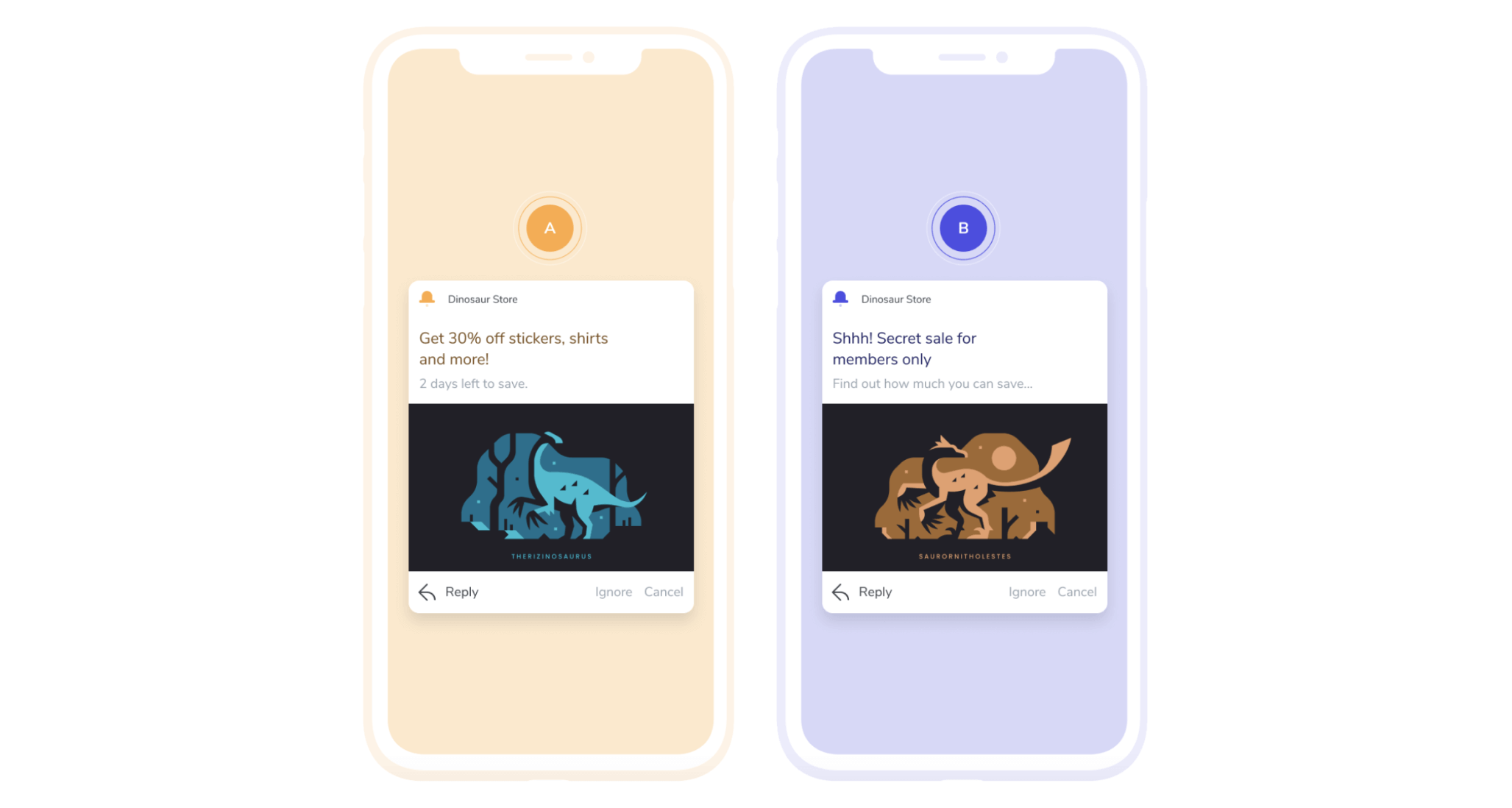
A period of stable MAU is also a perfect opportunity to engage with your user community, gather feedback, and iterate on your app to ensure it remains relevant and valuable to users over time. This may take the form of community events that reward joint participation or promoting incentivized referral programs to attract new users and encourage continued growth via word-of-mouth.
4. Users Aren’t Subscribing to Push or Email When Prompted
When users consistently refrain from subscribing to push notifications or emails when prompted in your mobile app, it is most likely an issue with unclear value propositions, concerns about privacy, or perceived communication overload. It may be time to analyze user feedback and assess the timing and context of subscription prompts. Are users feeling bombarded with multiple push notifications every day with irrelevant information?
Your users are much more likely to engage with notifications that address their specific demographics, preferences, and in-app behaviors.
According to OneSignal’s State of Messaging Report, businesses saw a 259% boost in engagement rates when sending personalized messages, rather than generic content.
Are you targeting inactive users with a heavier notification cadence than users who are already actively engaged with your app? Are you segmenting your audience based on interests, so you can tailor your messaging campaigns to cater to them with relevant offers? Are you leveraging users’ purchase history or historical in-app behavior to capitalize on predictable engagement patterns? These are all things that should be on your mind when personalizing your push and email campaigns.
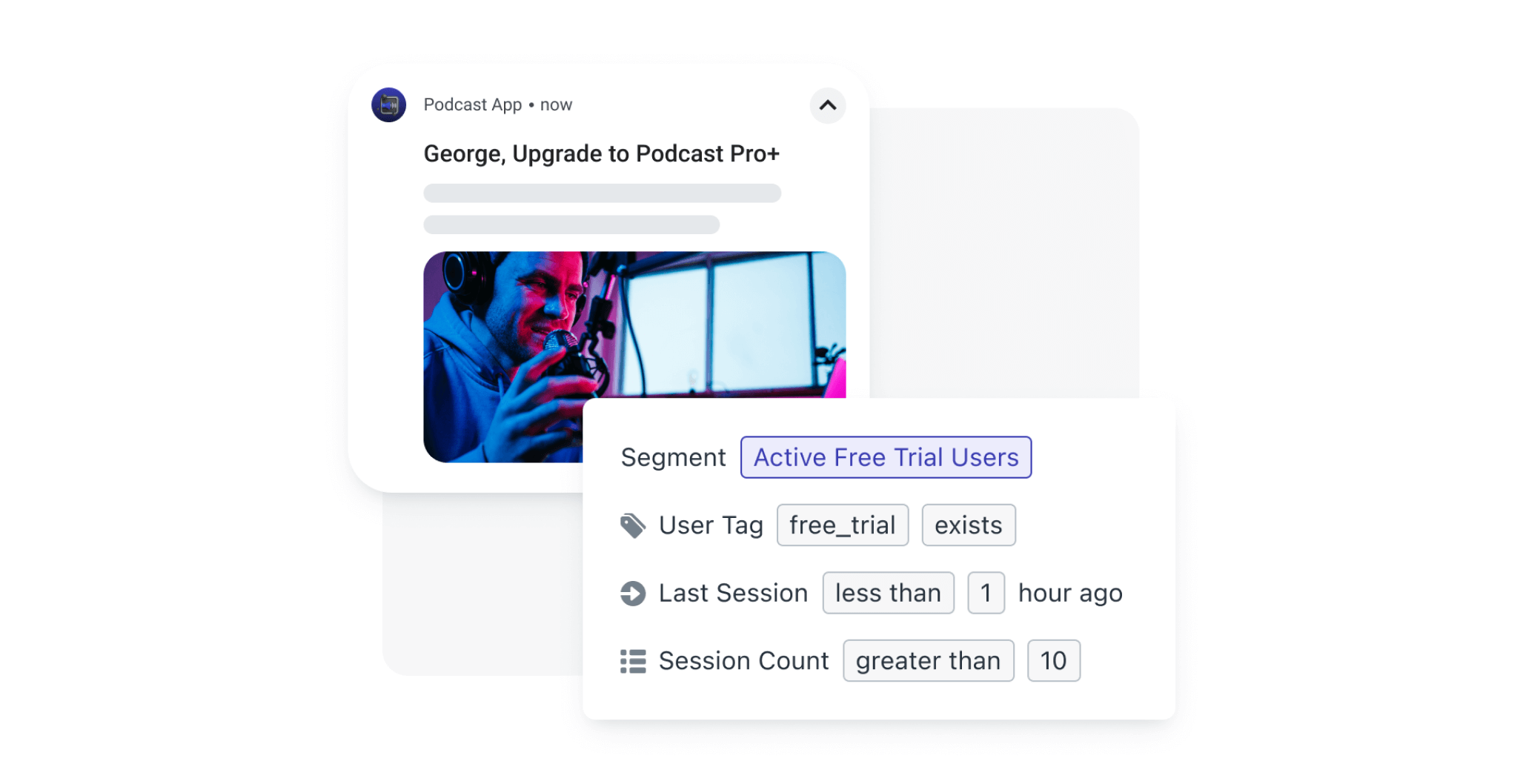
Additionally, take a look at your push notification prompting. Don’t simply ask users for notification permission with no explanation why. In-app messages can be used to appear before users’ native phone permission prompts to add important context to why subscribing to push notifications will bring them more value.
5. High Abandonment in Checkout or Registration
High abandonment rates in checkout or registration within your mobile app indicate that a significant number of users initiate the process but fail to complete it. To diagnose the causes of this user behavior, assess your checkout or registration flow for friction points, and consider potential barriers such as lengthy forms, unclear instructions, or unexpected requirements. If your app’s registration process is too complex or your checkout process makes it difficult for users to choose a variety of payment methods, it is most likely creating a frustrating experience. Too many abandoned sessions typically lead to app uninstalls, so it’s important to nurture these users with the appropriate re-engagement channels.
To address high abandonment rates, consider streamlining your registration or checkout process by minimizing the number of steps and simplifying form fields. Clearly communicate the value users will receive upon completion and always assure them of data security. Progress indicators, guiding tooltips, and guest checkout options all go a long way to reducing perceived barriers.
For apps struggling with abandoned carts specifically, it may be time to run an abandoned cart recovery campaign. These personalized messages utilize push, SMS, and email to remind users exactly the products they risk missing out on if they don’t return to complete their purchase. By carefully timing these messages to reach users within a few hours after abandonment, with an additional follow-up the next day, many businesses reclaim what would otherwise be money left on the table. Don’t forget to create a sense of urgency in your cart recovery campaigns to inspire immediate action — countdowns, exclusive offers, and inventory updates are all great ways to leverage FOMO!
A Mobile Messaging Platform That Understands User Behavior
With OneSignal, you don’t just get a seamless omnichannel solution to boost the lifetime value of your users. You get an industry-leading SDK to integrate your app painlessly, a robust message analytics suite to track your automated campaigns, and a powerful segmentation tool to capitalize on all that user behavior you’ve collected. Try OneSignal for free and get set up in under an hour!
Create a Free Account